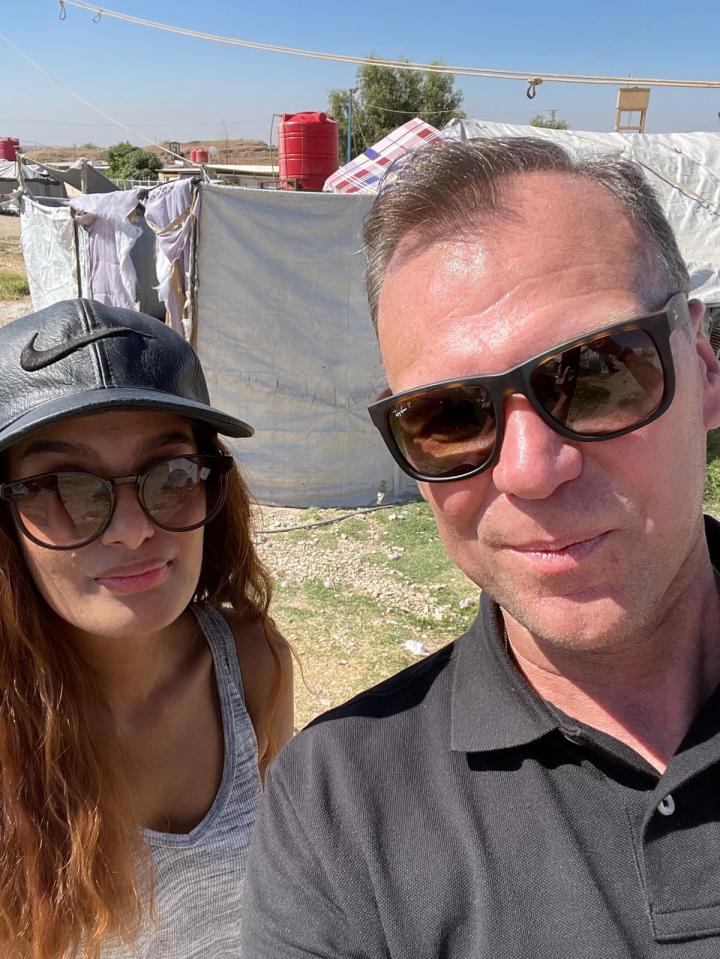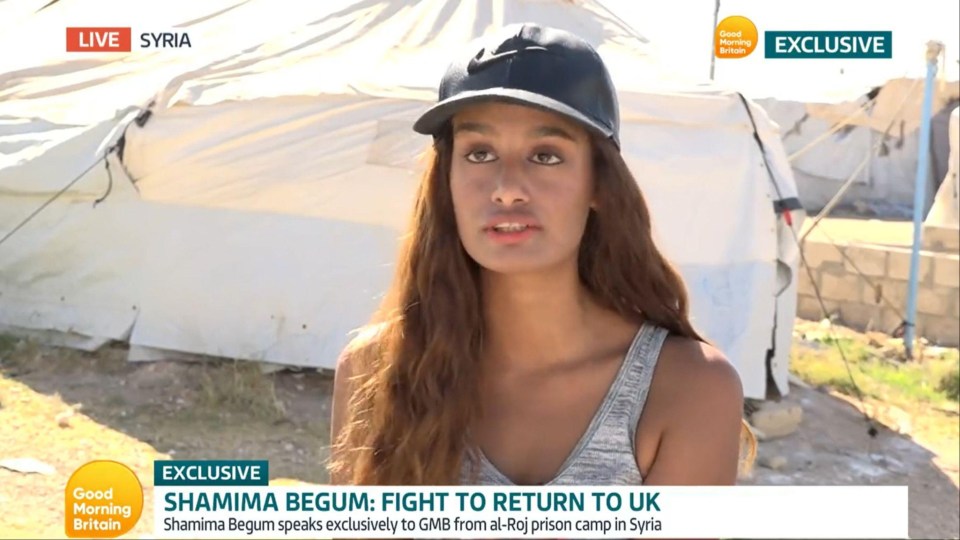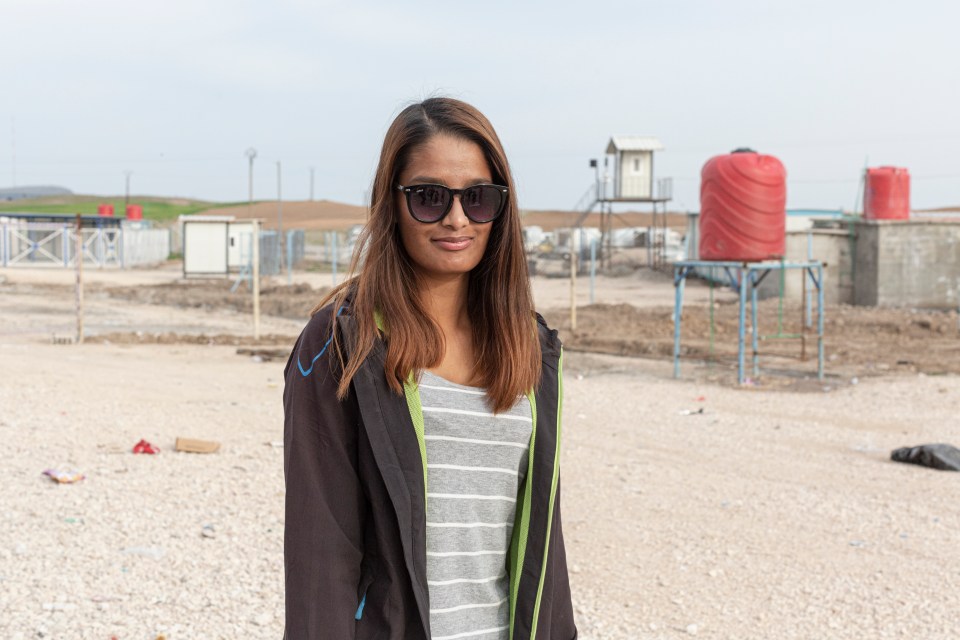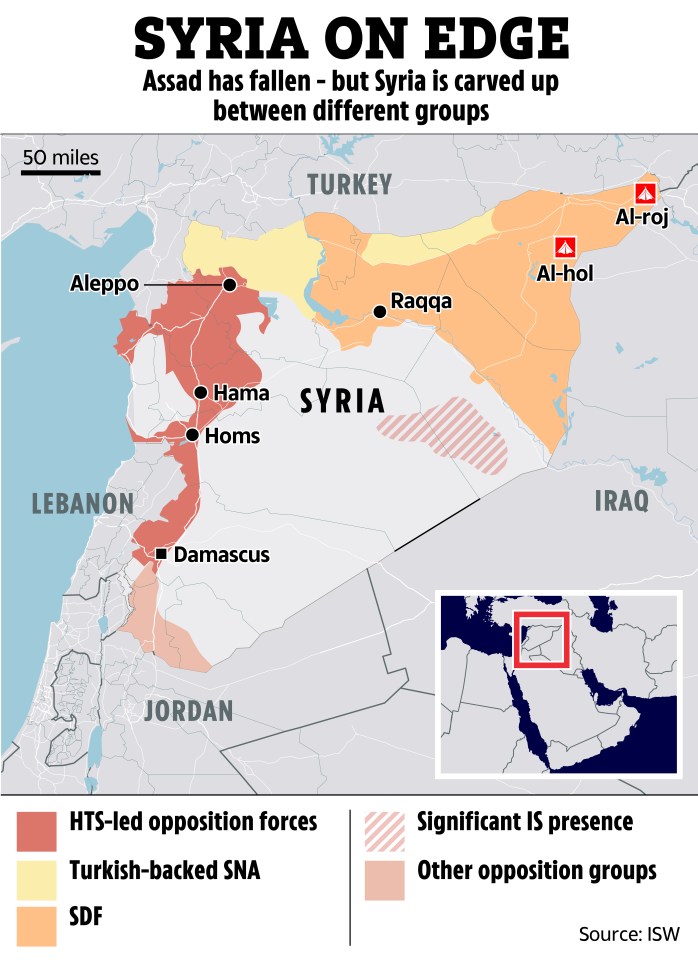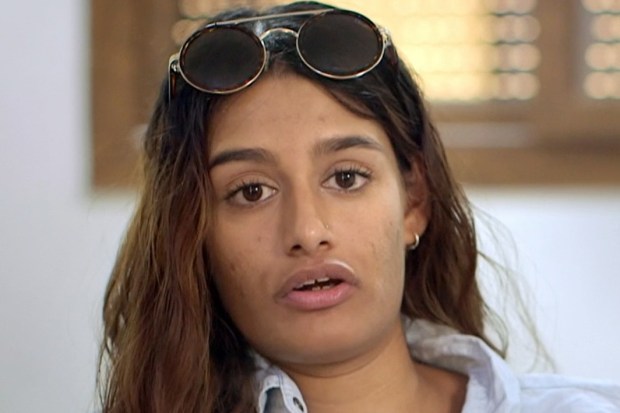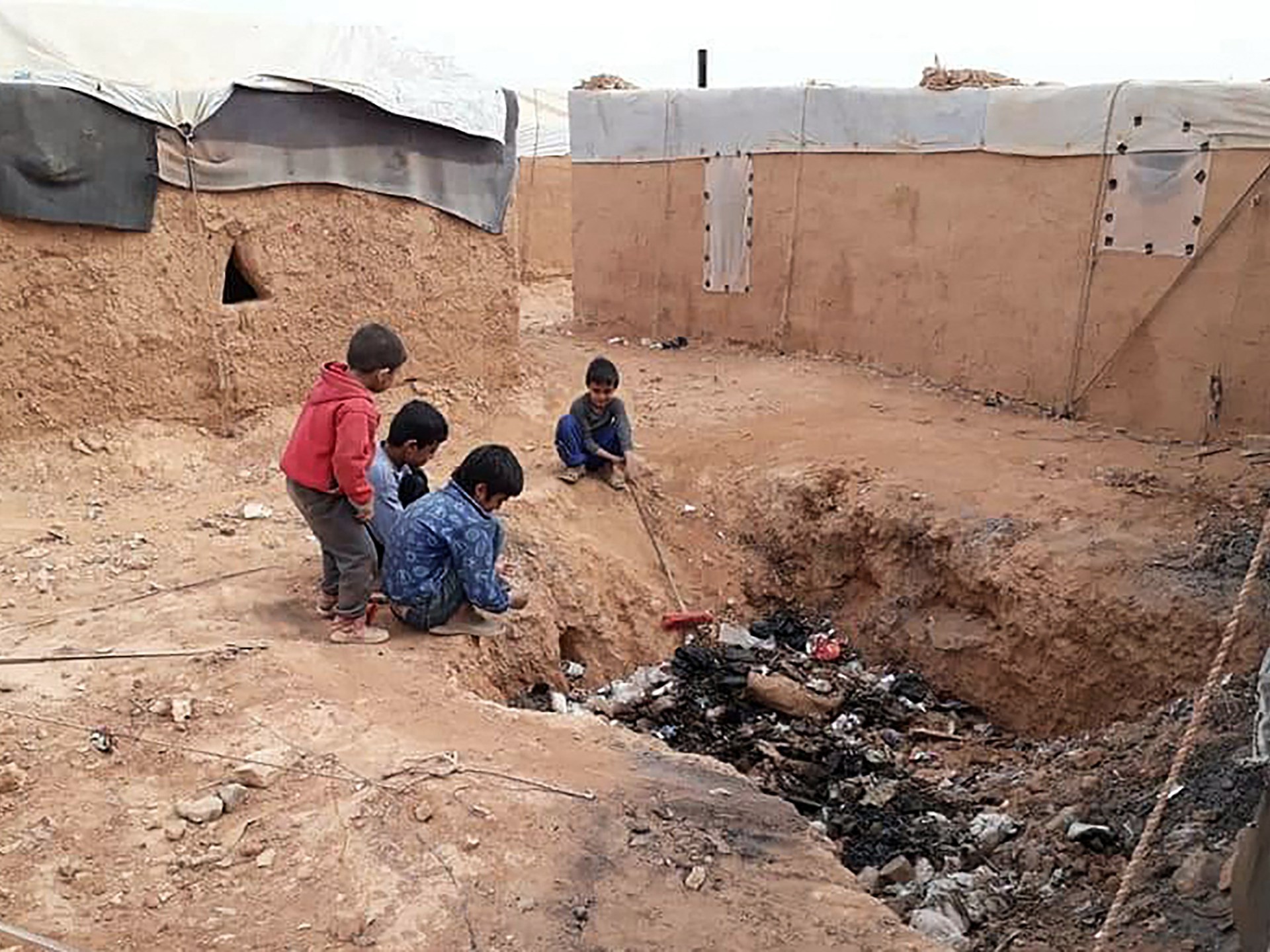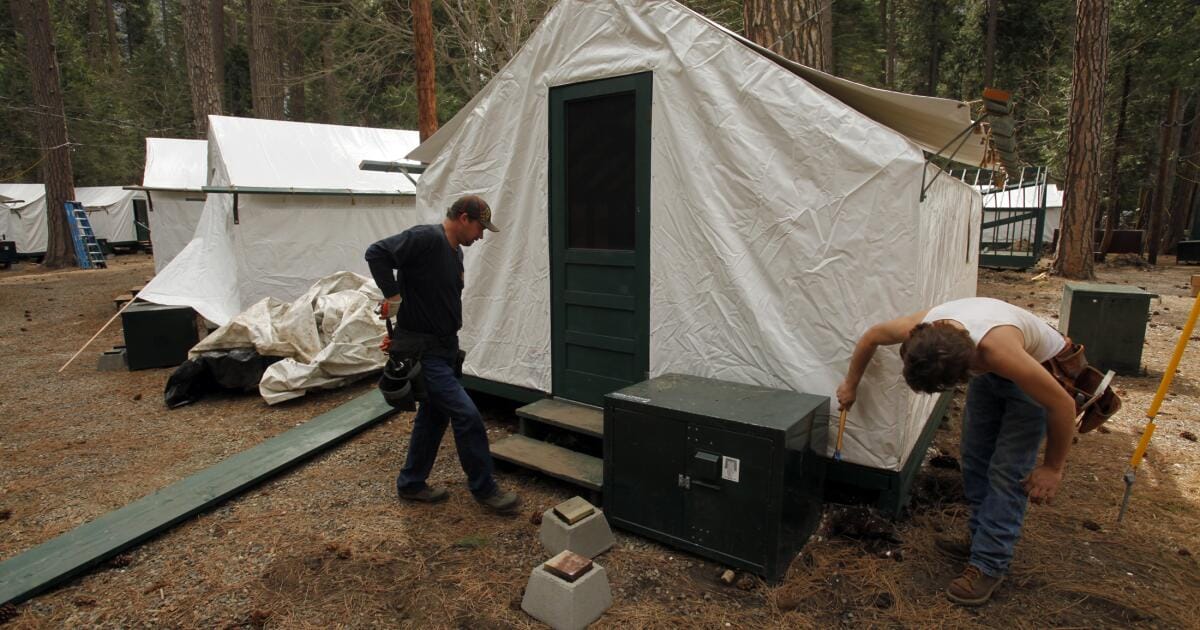Foreign aid cuts hurt the most vulnerable in world’s largest refugee camp | Rohingya
Cox’s Bazar, Bangladesh – The sound of children at play echoes through the verdant lanes of one of the dozens of refugee camps on the outskirts of Cox’s Bazar, a densely populated coastal town in southeast Bangladesh.
Just for a moment, the sounds manage to soften the harsh living conditions faced by the more than one million people who live here in the world’s largest refugee camp.
Described as the most persecuted people on the planet, the Rohingya Muslim refugees in Bangladesh may now be one of the most forgotten populations in the world, eight years after being ethnically cleansed from their homes in neighbouring Myanmar by a predominantely Buddhist military regime.
“Cox’s Bazar is ground zero for the impact of budget cuts on people in desperate need,” UN Secretary-General Antonio Guterres said during a visit to the sprawling camps in May.
The UN chief’s visit followed United States President Donald Trump’s gutting of the US Agency for International Development (USAID), which has stalled several key projects in the camps, and the United Kingdom announcing cuts to foreign aid in order to increase defence spending.
Healthcare in the camps has suffered as the severe blows to foreign aid bite.
‘They call me “langhra” (lame)’
Seated outside his makeshift bamboo hut, Jahid Alam told Al Jazeera how, before being forced to become a refugee, he had worked as a farmer and also fished for a living in the Napura region of his native Myanmar. It was back then, in 2016, that he first noticed his leg swell up for no apparent reason.
“I was farming and suddenly felt this intense urge to itch my left leg,” Alam said. “My leg soon turned red and began swelling up. I rushed home and tried to put some ice on it. But it didn’t help.”
A local doctor prescribed an ointment, but the itch continued, and so did the swelling.
He soon found it difficult to stand or walk and could no longer work, becoming dependent on his family members.
A year later, when Myanmar’s military began burning Rohingya homes in his village and torturing the women, he decided to send his family to Bangladesh.
Alam stayed behind to look after the cows on his land. But the military soon threatened him into leaving too and joining his family in neighbouring Bangladesh.
The 53-year-old has been treated by Doctors Without Borders, known by its French initials MSF, in the Kutupalong region of Cox’s Bazar since arriving, but amputation of his leg seems likely. While some doctors have said he has Elephantiasis – an infection that causes enlargement and swelling of limbs – a final diagnosis is yet to be made.
Along with the disease, Alam has to also deal with stigma due to his disability.
“They call me ‘langhra’(lame) when they see I can’t walk properly,” he said.
But, he adds: “If God has given me this disease and disability, he also gave me the opportunity to come to this camp and try to recover. In the near future I know I can start a new and better life.”
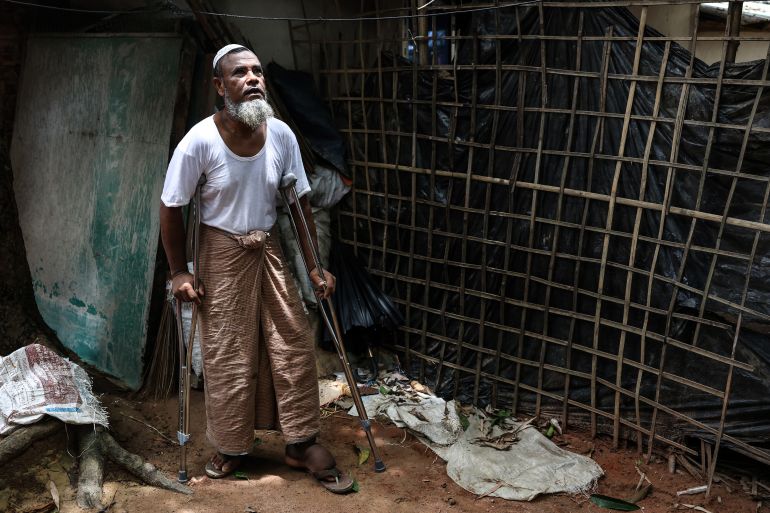
‘The word “Amma” gives me hope’
Seated in a dimly lit room in a small hut about a 10-minute walk from Alam’s shelter, Jahena Begum hopes aid organisations will continue supporting the camps and particularly people with disabilities.
Her daughter Sumaiya Akter, 23, and sons, Harez, 19, and Ayas, 21, are blind and have a cognitive disability that prevents them from speaking clearly. They are largely unaware of their surroundings.
“Their vision slowly began fading as they became teenagers,” Begum says.
“It was very difficult to watch, and healthcare facilities in Myanmar could not help,” said the 50-year-old mother as she patted her daughter’s leg.
The young girl giggled, unaware of what was going on around her.
Begum’s family arrived in Cox’s Bazar about nine months ago after the military in Myanmar burned their house down.
“We made it to the camps with the help of relatives. But life has been very hard for me,” said Begum, telling how she had single-handedly brought up her children since her husband’s death eight years ago.
Doctors from MSF have given her children spectacles and have begun running scans to understand the root cause of their disability.
“Right now, they express everything by making sounds. But the one word they speak, which is ‘Amma’, meaning mother, shows me that they at least recognise me,” Begum said.
“The word ‘Amma’ gives me hope and strength to continue trying to treat them. I want a better future for my children.”

‘The pain isn’t just physical – it’s emotional’
Clad in a blue and pink striped collared shirt and a striped brown longyi – the cloth woven around the waist and worn by men and women in Myanmar – Anowar Shah told of fleeing Myanmar to save his life, on top of losing a limb to a mine blast.
Shah said he was collecting firewood in his hometown Labada Prian Chey in Myanmar when his leg was blown off by the landmine last year.
Myanmar is among the world’s deadliest countries for landmine and unexploded ordnance casualties, according to a 2024 UN report, with more than 1,000 victims recorded in 2023 alone – a number that surpassed all other nations.
“Those were the longest, most painful days of my life,” said the 25-year-old Shah, who now needs crutches to get around.
“Losing my leg shattered everything. I went from being someone who provided and protected, to someone who depends on others just to get through the day. I can’t move freely, can’t work, can’t even perform simple tasks alone,” he said.
“I feel like I’ve become a burden to the people I love. The pain isn’t just physical – it’s emotional, it’s deep. I keep asking myself, ‘Why did this happen to me?’”
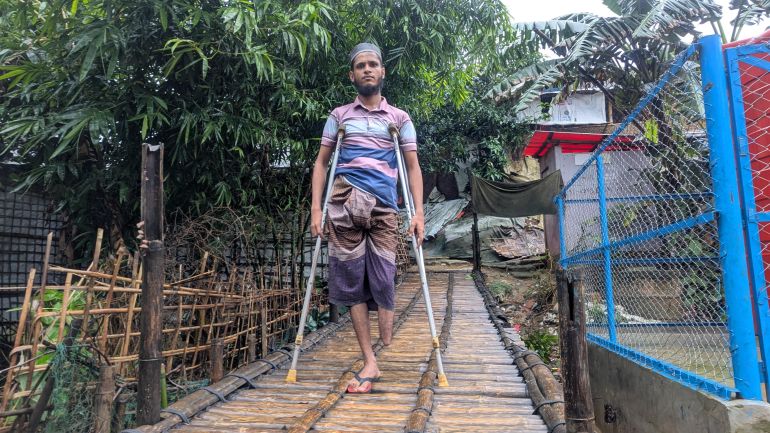
More than 30 refugees in the camps in Bangladesh have lost limbs in landmine explosions, leaving them disabled and dependent on others.
All parties to the armed conflict in Myanmar have used landmines in some capacity, said John Quinley, director of rights organisation Fortify Rights, in Myanmar.
“We know the Myanmar junta has used landmines over many years to bolster their bases. They also lay them in civilian areas around villages and towns that they have occupied and fled,” he told Al Jazeera.
Abdul Hashim, 25, who resides in Camp 21 in Cox’s Bazar, described how stepping on a landmine in February 2024 “drastically altered his life”.
“I have become dependent on others for even the simplest daily tasks. Once an active contributor to my family, I now feel like a burden,” he said.
Since arriving in the camp, Hashim has been in a rehabilitation programme at the Turkish Field Hospital where he receives medication and physical rehabilitation that involves balance exercises, stump care, and hygiene education.
He has also been assessed for a prosthetic limb which currently costs about 50,000 Bangladeshi Taka ($412). The cost for such limbs is borne by Australia’s Department of Foreign Affairs and Trade.
“Despite the trauma and hardship, I hold onto some hope. I dream of receiving a prosthetic leg soon, which would allow me to regain some independence and find work to support my family,” Hashim said.
So far, a total of 14 prosthetic limbs have been distributed and fitted for camp inhabitants by the aid group Humanity & Inclusion, who have expertise in producing the limbs in orthotic workshops outside the refugee camps.
Both Hashim and Shah are a part of the organisation’s rehabilitation programme, which has been providing gait training to help them adapt to the future, regular use of prosthetic limbs.
Tough decisions for aid workers
Seeking to ensure refugees in the camps are well supported and can live better lives after fleeing persecution, aid workers are currently having to make tough decisions due to foreign aid cuts.
“We are having to decide between feeding people and providing education and healthcare due to aid cuts,” a Bangladeshi healthcare worker who requested anonymity, for fear his comment could jeopardise future aid from the US, told Al Jazeera.
Quinley of Fortify Rights pointed out that while there are huge funding gaps because of the aid cuts, the Rohingya refugee response should not fall on any one government and should be a collective regional responsibility.
“There needs to be a regional response, particularly for countries in Southeast Asia, to give funding,” he said.
“Countries connected to the OIC (Organisation of Islamic Cooperation) in the Middle East could also give a lot more meaningful support,” he said.
He also recommended working with local humanitarian partners, “whether it’s Bangladeshi nationals or whether it’s Rohingya refugee groups themselves” since they know how to help their communities the best.
“Their ability to access people that need support is at the forefront, and they should be supported from governments worldwide,” he said.
For the estimated one million refugees in Cox’s Bazar, urgent support is needed at this time, when funds grow ever scarce.
According to a Joint Response Plan drawn up for the Rohingya, in 2024, just 30 percent of funding was received of a total $852.4m that was needed by the refugees.
As of May 2025, against an overall appeal for $934.5m for the refugees, just 15 percent received funding.
Cutting the aid budgets for the camps is a “short-sighted policy”, said Blandine Bouniol, deputy director of advocacy at Humanity & Inclusion humanitarian group.
It will, Bouniol said, “have a devastating impact on people”.



